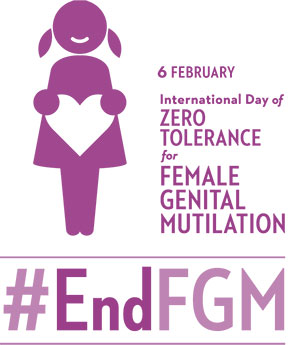By Evelyn Samba

PHOTO/United Nations
Today, the United Nations will lead the world in commemorating the International Day of Zero Tolerance for Female Genital Mutilation, marked annually on the 6th of February.
This commemoration comes hot on the heels of fresh debate about female genital mutilation and ongoing efforts to eliminate it in Kenya.
This fresh debate came about following the recent move by a medical doctor who filed a petition at the High Court in Machakos seeking to have female genital mutilation decriminalised.
As expected, campaigners against female genital mutilation immediately protested very loudly both online and in the streets, and with good reason.
Female genital mutilation has been classified by the United Nations as violence against women and girls. There is evidence that the practice is injurious, harmful and in extreme cases leads to complications during child birth that can result in the death of both mother and child.
It has far reaching social consequences, including leading to girls dropping out of school and child marriage, affecting the ability of girls and women to achieve their full potential in life.
Progress in Kenya
Kenya as a country seems to be making progress in the fight against female genital mutilation. According to the 2014 Kenya Demographic and Health Survey (KDHS), the national prevalence of FGM is 21 percent, down from 27 percent in 2008/9 and 32 percent in 2003.
While this is so, there are places in the country where almost every woman and girl undergoes female genital mutilation as a rite of passage.
A briefing note published by UNFPA and UNICEF in 2015 shows that female genital mutilation prevalence remains very high amongst the Somali (at 94%), Samburu (86%), Kisii (84%), and Maasai at (78%).
This data shows that much work remains to be done and we must not relent. Anti-female genital mutilation campaigners in Kenya, including the two UNFPA and UNICEF in their briefing note, warned that new trends are emerging that require continuous efforts against female genital mutilation.
Emerging trends
The new trends include girls are being put through female genital mutilation at an earlier age, female genital mutilation is being conducted by medical practitioners in a bid to make it less painful and harmful, cross border cutting is on the increase, and increased secrecy when the ceremonies take place.
One of the grave consequences of female genital mutilation is that it is usually a pre-cursor to early and child marriage, which usually forces girls out of school. As a result, the women and girls are exposed to life-long disadvantages as it affects their future prospects for paid employment or business.
We agree with the United Nations. Female genital mutilation reflects deep-rooted inequality between men and women, and constitutes an extreme form of discrimination against women and girls. The practice also violates their rights to health, security and bodily integrity, their right to be free from torture and cruel, inhuman or degrading treatment, and their right to life when the procedure results in death.
The truth is that female genital mutilation is harmful to girls and women, to their communities and to the nation. It has no benefits, health or social and whatsoever and must remain outlawed.
Ms Samba is the Kenya country director at Deutsche Stiftung Weltbevoelkerung (DSW), an international development agency.
